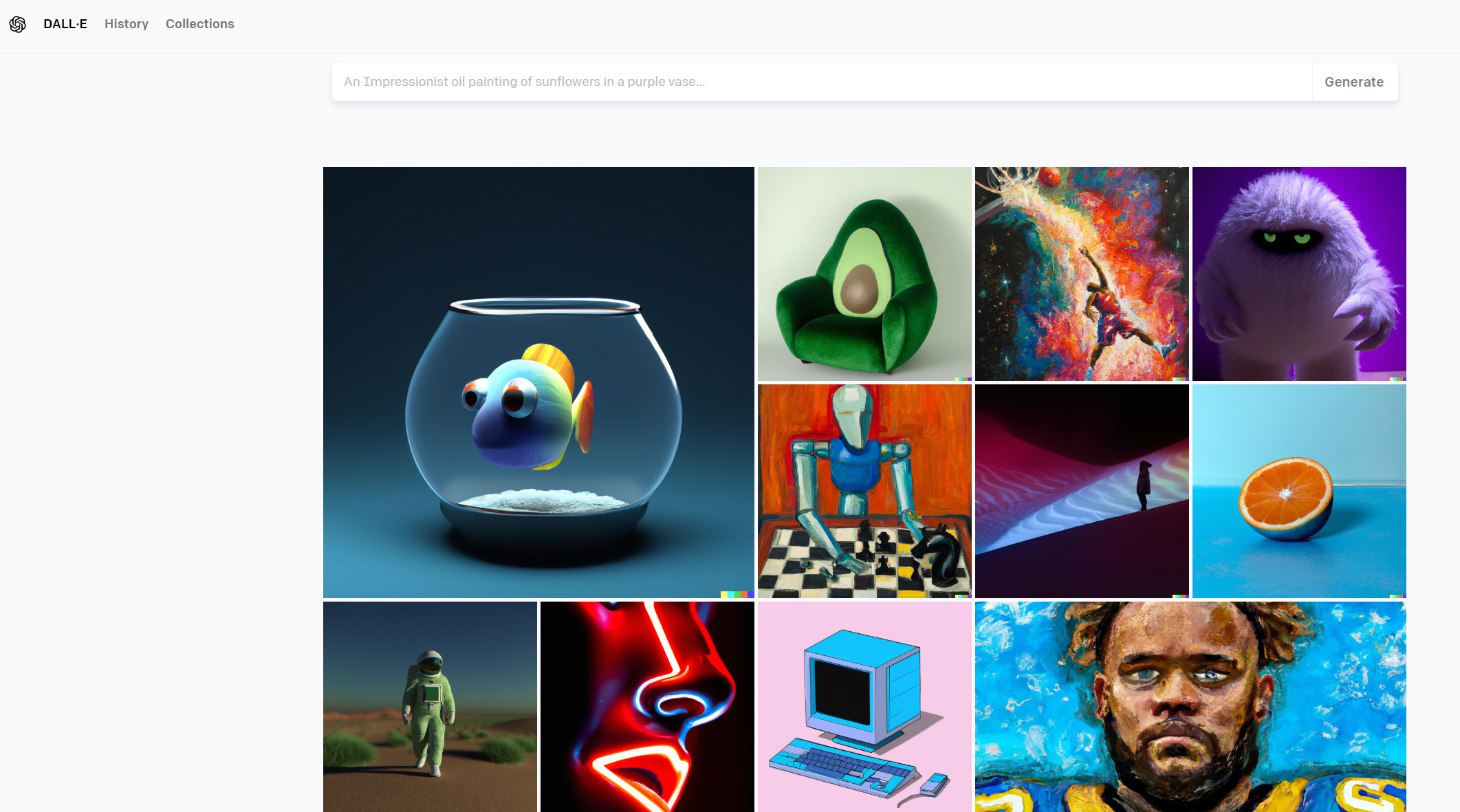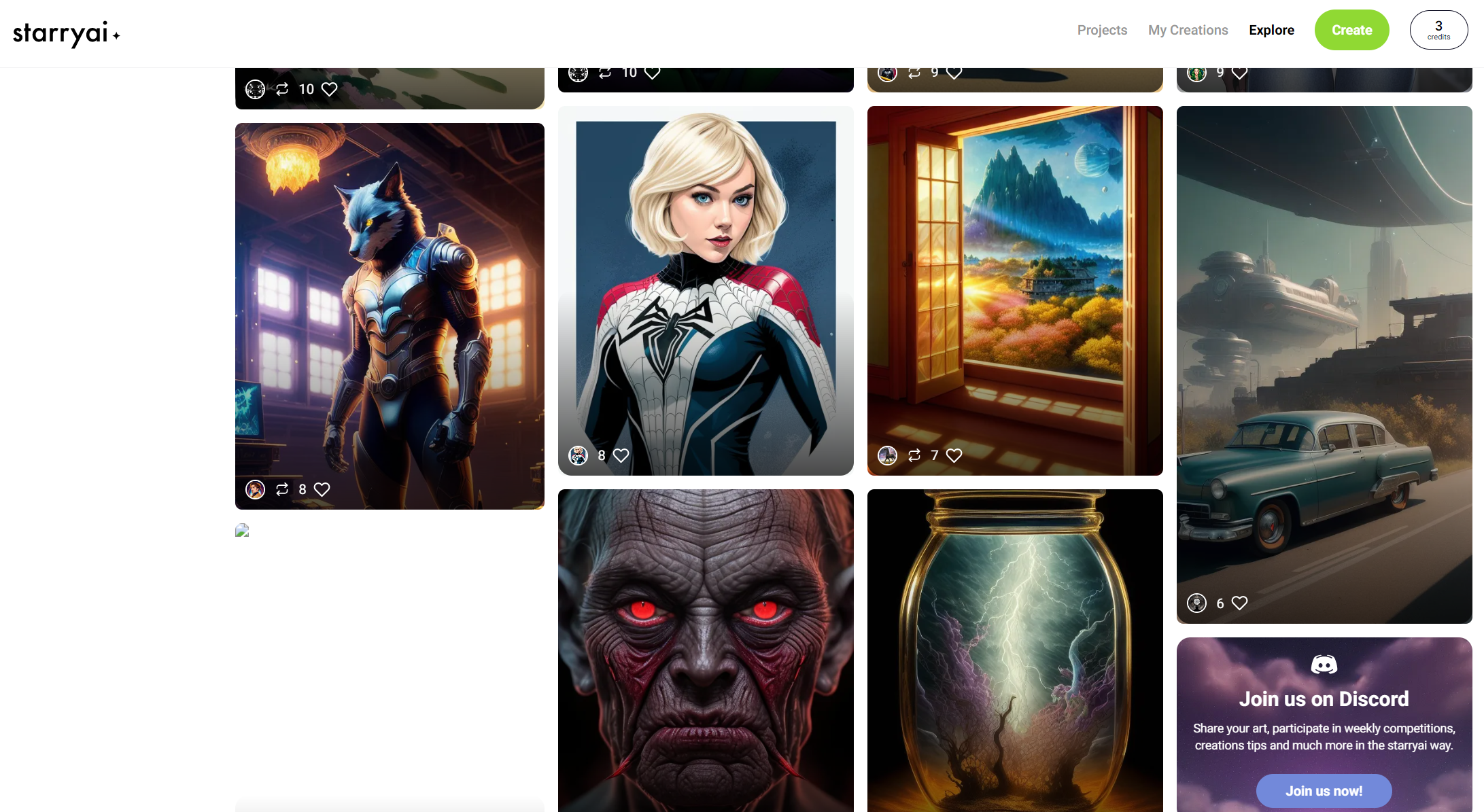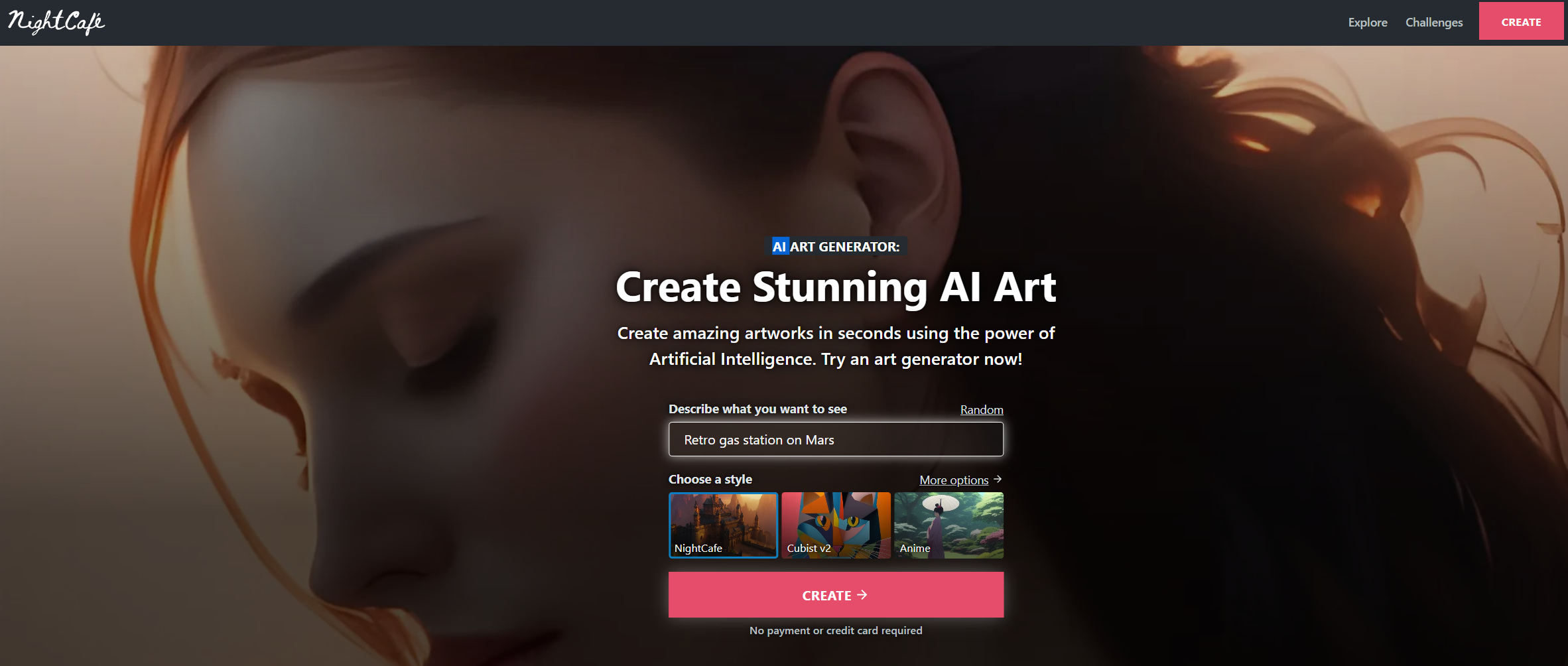Advancements in artificial intelligence (AI) technology have made it possible for people to automatically create artworks even if they might not have the skills required to do so by themselves.
AI-generated NFTs are unique non-fungible tokens created with the use of AI technology. While AI-generated art remains a controversial topic, there is certainly something valuable in the fact anyone can see their imagination come alive in a visual medium just by writing a simple prompt.
You can create AI generated NFTs with tools like Midjourney and DALL-E 2. We’ll help you create AI generated NFTs by highlighting the best AI NFT generators available on the market today. Some of the services we’re featuring specifically cater to NFTs, while others simply generate art that you can use to create your NFTs.
The best AI NFT generators
If you’re interested in learning more about NFTs first, check out our NFT crash course, which will explain everything you know to get started. If you’re already an NFT pro, let’s go right ahead with our list of the best AI NFT generator tools.
- Midjourney – An AI-powered tool that generates high quality images
- DALL-E – A text-to-image AI image generator from the creators of ChatGPT
- StarryAI – A Stable Diffusion-powered AI image generator
- Binance Bicasso – An AI NFT generator from the Binance cryptocurrency exchange
- HotPot AI – A flexible platform for AI-powered image creation and editing
- AutoMinter – A comprehensive suite of services for minting NFTs
- NightCafe – A powerful AI art generator platform
- NFT Art Generator by OneMint – No-code tools for creating an NFT collection
1. Midjourney – An AI-powered tool that generates high quality images

Midjourney is a service that allows users to create high-quality images with a simple text prompt.
To use Midjourney, you’ll have to join their Discord server. You can get started with Midjourney for free, although the free trial is quite limited. Still, you can use it to get a sense of what kinds of images Midjourney is capable of generating.
The Midjourney platform offers three paid plans:
- Basic: $10 / month
- Standard: $30 / month
- Pro: $60 / month
Midjourney generates images by using very powerful graphics processing units (GPUs). This hardware is costly to acquire and operate, so the service places limits on the GPU time each user can access per month. The biggest difference between the free trial and the paid plans is the amount of GPU time you get per month.
“Fast GPU time” is limited for all users (with time limits depending on the subscription tier), but subscribers to the Standard and Pro plans get access to unlimited “Relax GPU time”. When using the Relax mode, images are generated more slowly because user requests are placed into a queue. Meanwhile, Fast mode attempts to start generating the image as soon as possible.
Another key difference between the free trial and the paid plans is that paid plan subscribers get commercial rights to the images they generate with Midjourney. On the other hand, images generated for free trial users are subject to the CC BY-NC 4.0 license.
Due to the high quality images Midjourney is capable of generating, the platform can be used to create images that can then be issued as one-off NFTs.
2. DALL-E 2 – A text-to-image AI image generator from the creators of ChatGPT

DALL-E 2 is an AI-powered system that takes natural language inputs from users and generates images. It’s also possible to upload images that DALL-E 2 then edits based on your prompt. DALL-E 2 was created by OpenAI, the company that’s also behind the immensely popular ChatGPT chatbot.
While DALL-E 2 can generate a wide range of images, it’s especially adept at generating images in specific styles (for example abstract, impressionist, pencil sketch). If you want to use DALL-E 2, you’ll need to buy credits from OpenAI.
Making a request to DALL-E 2 that results in a generated image costs one credit. At the time of writing, OpenAI is charging $15 for 115 credits (about $0.13 per credit). Certain early adopters of DALL-E 2 get access to free credits, but the service cannot be accessed for free otherwise.
Similarly to Midjourney, DALL-E 2 can be used to create images that can later be issued as NFTs. The platform is perhaps best suited for generating one-off NFTs, as it’s difficult to get the consistency required for an NFT collection.
3. StarryAI – A Stable Diffusion-powered AI image generator

StarryAI is an AI-powered service that allows users to generate images from text prompts. The StarryAI service uses the Stable Diffusion text-to-image model. It features two main types of AI image generators, one for art and one for photos.
A useful feature of StarryAI is that it can be used through a web interface or through a mobile app. The StarryAI app is available on both iOS and Android. Each user can generate up to 25 images daily for free. If you want to generate more images, StarryAI offers paid subscriptions in three tiers:
- Starter: $8.99 / month
- Unlimited Pro: $31.99 / month
- Unlimited Pro Max: $63.99 / month
*The pricing above assumes an annual subscription.
Similarly to Midjourney, getting a paid subscription to StarryAI allows you to generate a larger number of images. Unlimited Pro and Unlimited Pro Max also get access to fast image generations.
4. Binance Bicasso – An AI NFT generator from the Binance cryptocurrency exchange

Bicasso is a AI-generated NFT tool offered by the Binance cryptocurrency exchange. The tool allows users to create NFTs and list the on the Binance NFT marketplace. Images generated by the tool can be customized with text, backgrounds, stickers and other features.
Each image generated by Bicasso is one of a kind, and the efficient design of the BNB Chain blockchain means that minting NFTs from the generated images is not expensive.
The Bicasso tool was originally launched for a short period of time and only supported a limited number of mints. At the time of writing, the Bicasso tool is not yet accessible to the general public. However, there is currently a waitlist where you can sign up to access Bicasso once it becomes available.
5. Hotpot AI – A flexible platform for AI-powered image creation and editing

Hotpot is a platform providing a variety of services that allow users to create images using AI technology. The Hotpot platform can be used to create AI generated NFT collections, as it offers a bulk NFT creation feature, where users can create 100, 1,000, 5,000 or 10,000 images in one batch. However, the task of minting the images as NFTs is left up to the user.
In addition to its bulk NFT creation service, Hotpot AI also provides other AI-powered services like image sharpening, enlarging and colorization. Using Hotpot’s services requires credits, which you can purchase on a one-time basis or through a subscription that adds a certain number of credits to your accounts every month.
6. AutoMinter – A comprehensive suite of services for minting NFTs

AutoMinter is a platform that provides a comprehensive suite of services for projects that are looking to launch their own NFTs. Please note that the AutoMinter currently doesn’t offer the option of generating images with AI. However, it does allow users to upload art for each layer of their NFTs, which are then automatically combined into the finished product.
The images associated with NFTs minted through AutoMinter are stored via IPFS on the Sia decentralized storage network. AutoMinter also utilizes highly optimized contracts which help NFT projects and users save on gas costs. AutoMinter also allows projects to launch their minting page and manage whitelisting.
You could use one of the other tools featured in this article to create NFT art with AI, and then use AutoMinter to actually mint them as NFTs.
7. NightCafe – A powerful AI art generator platform

NightCafe is an AI art generator platform that supports several AI image generation algorithms and has a large community of users. NightCafe can be used for free, although free users only have access to a limited number of credits.
There’s two main ways of using NightCafe. You can either upload an image and have the AI reimagine it in a different style, or enter in a text prompt that generates an image “from scratch”. If you want to use NightCafe frequently, you can choose one of their paid subscription plans, which range from $9.99 to $79.99 per month.
NightCafe users can choose from three different AI models to generate their images:
- Stable Diffusion v1.5
- Stable Diffusion v2.1
- SDXL BETA
8. NFT Art Generator by OneMint – No-code tools for creating an NFT collection

OneMint provides a set of no-code tools that make it easy for anyone to launch an NFT collection. Please note that just like AutoMinter, OneMint’s platform also doesn’t provide AI-powered image generation. However, you can use it to create and mint NFTs using assets you’ve already created. You can customize the rarity of different traits to suit the needs of your collection.
In addition to NFT minting, OneMint’s platform also provides airdrop and whitelisting management. By using a platform like OneMint in combination with an AI-powered image generation service, you can mint an NFT collection without coding or artistic skills.
The bottom line — AI tools are more accessible than ever, but creating a successful NFT collection is not easy
The proliferation of AI-powered tools has provided unprecedented opportunities to create visual art that are accessible to anyone. It’s now possible to launch an NFT collection even if you might not have the skills to make the art itself. Hopefully, our article introduced you to some useful tools that you can use to mint your own AI-generated NFT collection.
While there has been tremendous progress in the field of AI image generation recently, people are still quite adept at spotting that an image was generated with an AI tool. As always, the best practice is to be upfront and plainly state that the NFT you’re selling was generated by an AI.
Another thing to keep in mind is that AI-generated NFTs might see lower demand than NFTs featuring artwork created by humans. The talent and skill required to make an artwork is appreciated by many collectors, and can definitely add a premium compared to AI-generated images.
If you’re interested in what kind of NFT projects are seeing success, check out our list of the best new and upcoming NFT projects.
Source: https://coincodex.com/article/26994/ai-nft-generators/